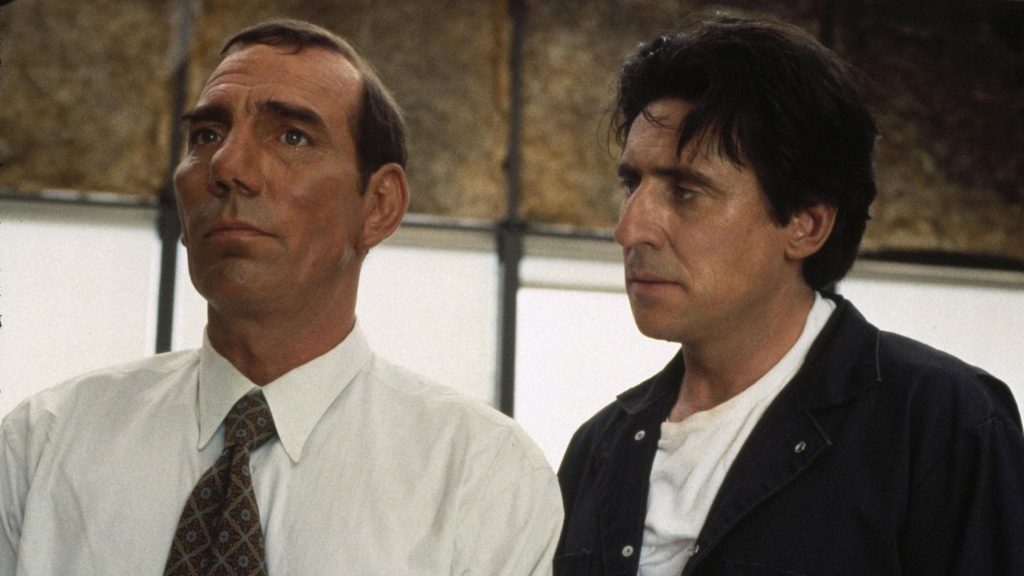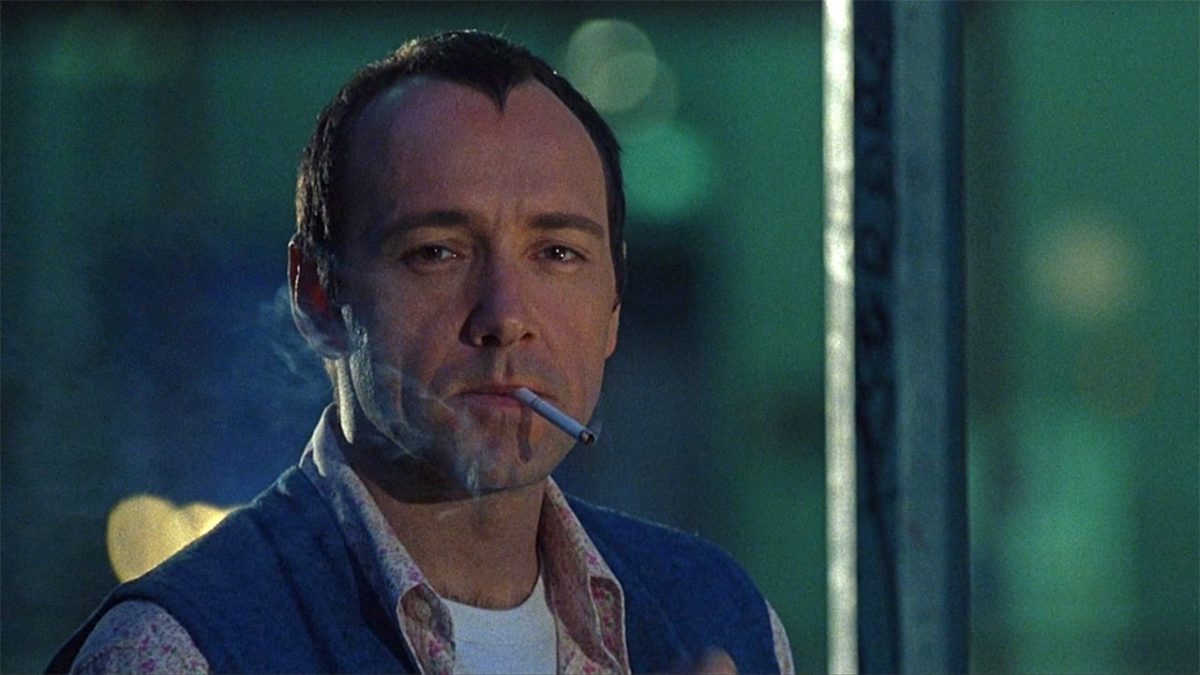Has there ever been a movie made more interesting by its final five minutes than The Usual Suspects?
The first 90 minutes of The Usual Suspects is a functional but unremarkable crime thriller about a drug heist gone wrong. Verbal Kint (Kevin Spacey), a crippled crook, is interrogated by Special Agent Dave Kujan (Chazz Palminteri) as he pieces together, in flashback, the story of the failed heist.
We learn that the man in charge of the operation was Dean Keaton (Gabriel Byrne), who was recruited for the job by some of his fellow criminals — the titular “suspects” — at a questioning for some other crime.
This backstory of the heist is connected to the mysterious criminal entity known as “Keyser Soze” — a name so frightening, it makes low-life thugs shudder as if someone had just muttered “Voldemort.” As Special Agent Kujan interrogates Verbal, it becomes clear that this “Keyser Soze” is someone on the inside, manipulating everyone else: Keaton. Keaton is trying to hide his secret identity and cover up his connection to other, more serious crimes.
If you somehow have neither seen The Usual Suspects nor had its final five minutes spoiled for you, I encourage you to stop reading now and go watch the film. Seriously. Stop reading. Go. Now!

Alright, I’ll be using full spoilers from here on out.
After Keaton is outed as Keyser Soze, Verbal’s interrogation is complete, and he’s released from the police station. But, in one of my favorite scenes in movie history, a different story is revealed: The man we knew as Verbal Kint (i.e. Kevin Spacey) is in fact Keyser Soze himself, and the entire flashback we’d just witness was some sort of elaborate fabrication by Verbal/Keyser, improvised from various details of ephemera hidden in plain sight in the interrogation room like ads and brand names. The entire movie we just watched was in fact a piece of fiction (fiction within fiction) by Verbal/Soze.
“It all makes sense when you look at it right. You gotta stand back. That’s all,” says one of Special Agent Kujan’s fellow cops.
Or, more memorably: “The greatest trick the devil ever pulled was convincing the world he didn’t exist.”
This closing five minute montage is an absolute masterpiece of editing: Layers of audio clips from throughout the movie reassembled and pasted with new significance on top of scenes and moments we’d previously seen, showing us piece-by-piece that Verbal is Keyser. So many little seemingly insignificant fragments assemble into a magic trick; one that we, like Kujan, should have seen coming, had we only stood back and looked at it right and realized the devil existed right in front of us.
The montage cross-cuts against a slow-motion shot of a coffee cup falling to the ground and shattering: the metaphoric bomb dropping with all the little pieces for us to pick up. No matter how many times I see this movie, I get chills every single time as the credits roll.

There is a case to be made (which has been by plenty of viewers and critics, including Roger Ebert) that this final twist actually makes the movie worse. We had, more or less, wasted our time leading up to that ending. The movie rubs in our face that everything it showed us is a bunch of malarkey, not worthy of reflecting upon or thinking about since we know it’s a hastily-constructed improvisation. An illusion. In other words, it’s the “it was all a dream” cheap twist, but even flimsier.
I come at it from the reverse angle, though. I find the movie’s first 90 minutes to be adequate but uninteresting. Bryan Singer’s direction is occasionally moody or haunting, but more often just lethargic. The acting is a real burden on the film; Spacey and Palminteri are good, but Byrne is a major liability, failing to convey any of the menace his character should have as our red herring villain. He has all the intimidation of a used car salesman.
The writing by Christopher McQuarrie, too, is hit-or-miss. There’s a half-baked romance involving Keaton and a cop, the side characters (i.e. the other “usual suspects”) are pretty forgettable, and the heist itself is pretty uninteresting.
(One excellent part of the movie throughout is the score by Singer’s frequent collaborator John Ottman. The music adds a strong layer of intrigue to the story that never lifts, even when the film drags.)
So it really comes down to how much you think those last few minutes retroactively elevate the rest of the film. And, for me, the answer “tremendously.” It’s quite possibly my favorite movie conclusion ever, a new kind of heist: The thief steals the very narrative fabric of our film-viewing experience.
Parts of it don’t stand up to scrutiny, but that’s part of the fun: What parts of the faux flashback are “real”? We can trust, for example, that there was indeed a lineup where the five criminals met, so we’re getting the truth (or something similar) at the start. So where is the intersection between the truth and the myth?
It’s a mystery I’ve been scratching at for more than a decade. I know I will never solve it, but it’s enough to bring me back again and again. And whenever I start to think I have the answers… like that, it’s gone.
- Review Series: Top 100 (2009 List)
Is It Good?
Exceptionally Good (7/8)
Dan is the founder and head critic of The Goods. Follow Dan on Letterboxd. Join the Discord for updates and discussion.

